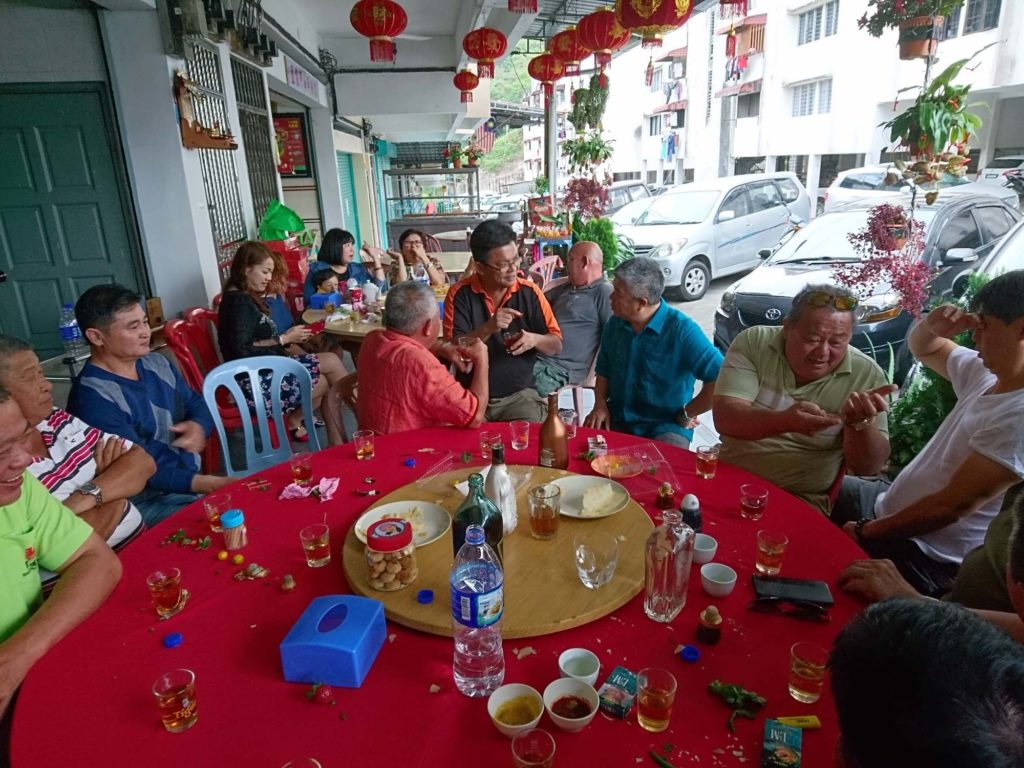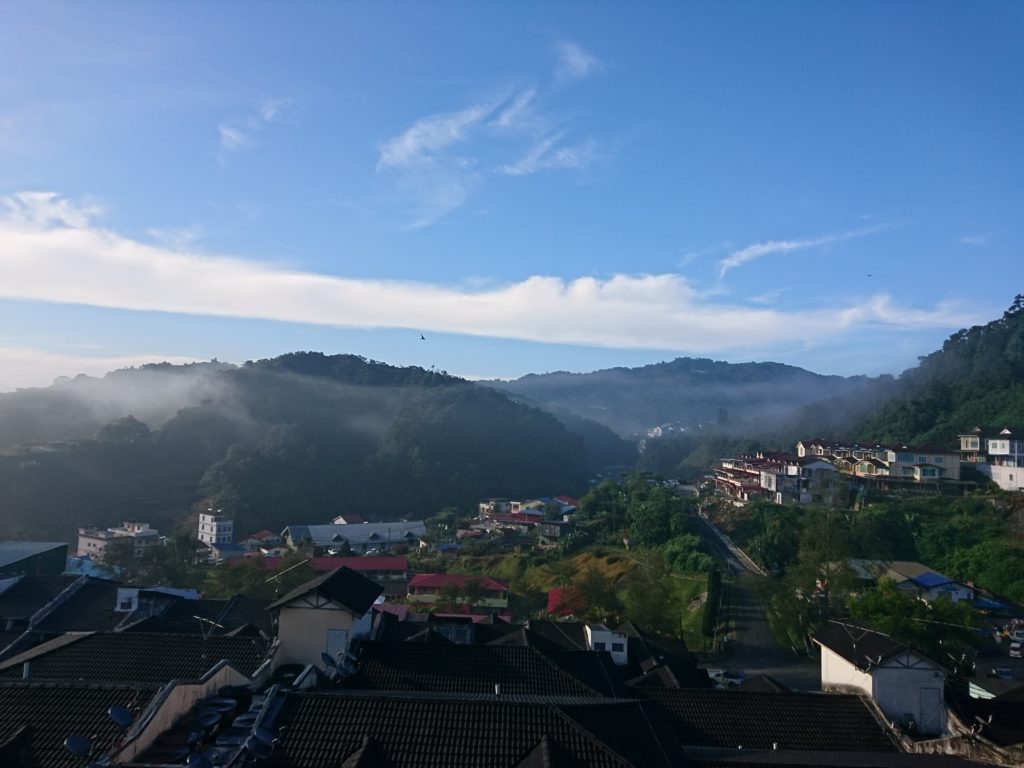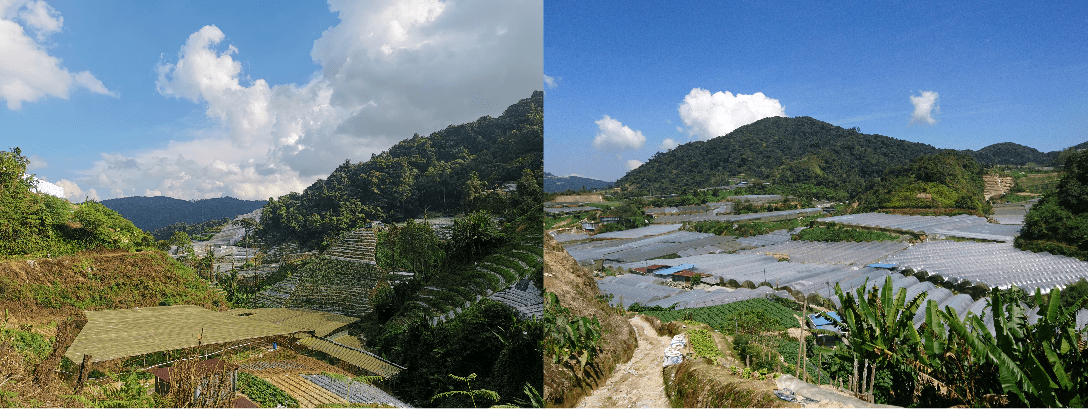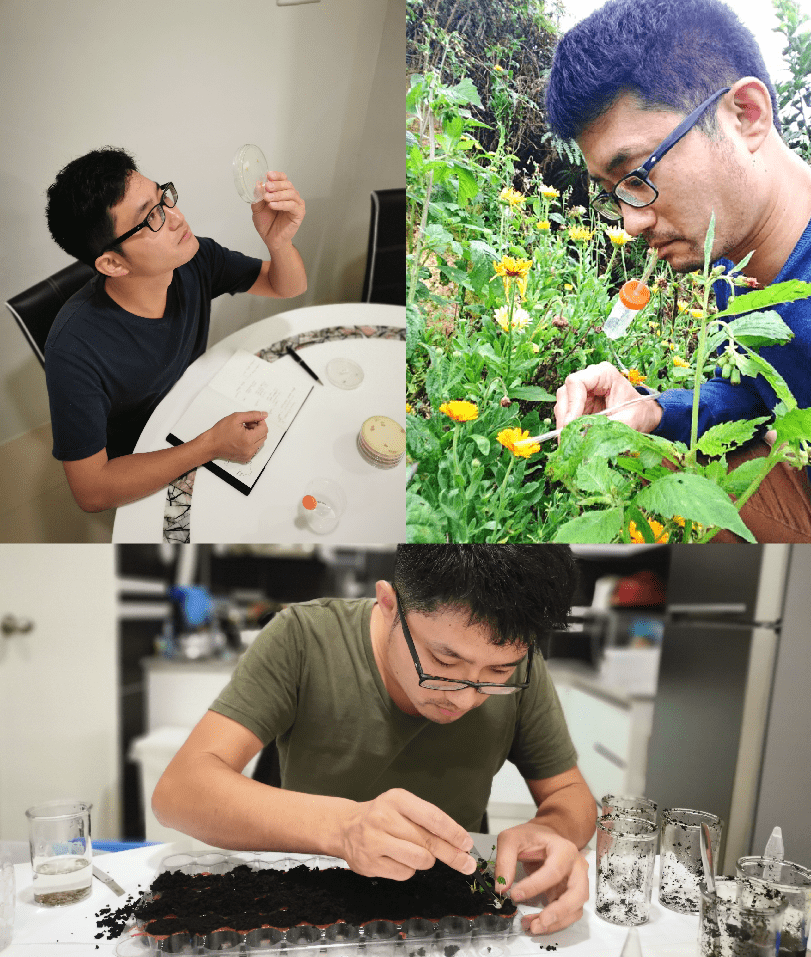20% of the members in CHITOSE GROUP are from Southeast Asia (Singapore, Malaysia and Brunei). The situation at this moment is one where the main area where large-scale businesses are expanding is in Southeast Asia. So, the feelings from those involved in the hands-on business can only be told from the site in Southeast Asia! I can’t always go there to conduct an interview, so I decided to ask our members who are doing their best at the site to write about it by starting the series “From the sites in Southeast Asia”.
The 1st part is about Cameron Highlands in Malaysia, the production base of “Chitose strawberry”. Kataoka will provide us with information from the site throughout the next 5 months.
*Author:Yosuke Kataoka(Chitose Agri Laboratory Sdn. Bhd., BioEngineer)
Working in the mountains of Malaysia on Borneo island for 2 years after joining Chitose, and thereafter be in charge of Southeast Asian agriculture project in producing “Chitose strawberry” mainly in Cameron Highlands.

Drinking liquor and being overwhelmed by people
“Yoh, mari sini, minum, minum (Yosuke, come here, drink, drink)”
I went to the restaurant next to the office as I was called by a low threatening voice. A red table cloth which for the Chinese means good luck is laid on the round table, and there were already more than 10 beer bottles that were empty. And in the middle, a 3L brandy is standing there as if to rule the place. Some men, who were only a little younger than my father, around 60, were surrounding the round table and already pretty mellow even though the sun is still out. A glass was handed over to me as soon as I showed up, and whiskey or brandy was poured into it. And we shouted “Yam seng! (Cheers)”
This is Cameron Highlands in Malaysia.

Our office is in an area of the Cameron Plateau where Chinese farmers get together. Fortunately, there is a Chinese restaurant beside and when the vegetables are expensive, the economy is good here. So, we often see situations like this on the weekends or during public holidays. But there are no people that are around my age or younger. Every time I get invited by them to drink together, I always realise that I am living in the culture that they have developed. We don’t usually talk about business while drinking, but they are always a reliable helper in terms of business or when I’m having troubles in daily life.
Also, farmers’ breakfast time is an important social place. I show up at breakfast time when I want information, and someone I ask will call out to people who come to the place one by one and a variety of information will gather. There are some unexpected stories in it, but we can know about the farmer or their acquaintance’s experiences and mostly they are worth listening to.
The forever fall season – Cameron Highlands
I joined the strawberry production project at Cameron Highlands in 2017 after finishing the oil palm plantation project. Compared to the rough-natural tropical zone of low-ground-leveled oil palm plantation, Cameron Highlands seems like it is in the middle of autumn. Insects sing beautifully on the cool nights. That is why strawberries can be harvested in the tropical zone, and it is stably produced all year round. The plants creating the atmosphere of Cameron Highlands are different from those of in the tropical zone. It makes my heart calm and nostalgic when I see some kinds of plants that are sometimes seen in the mountains in Japan.


People at the front line of strawberry production.
Our projects in Malaysia are basically divided into the farm team and packing team. The assistants of the farm team are mainly strong men laborers from Bangladesh, and most assistants in the packing team are women with Chinese origins that are deft with their hands.
Most Bangladeshis in the plantation team are Muslims, so they start their day by praying everyday before the sunrise. And after having a quick breakfast, in the cool air with the darkness still in the sky, they harvest the strawberries while getting wet by the evening dew of the strawberry leaves. After awhile, the morning light starts to shine on the strawberries and glitters the drops of dew on the leaves, which is the most beautiful moment.


Managing the strawberries start after the harvest, such as removing old leaves, too many flowers or counter measuring an agriculture disease. And the afternoon part starts after lunch. This is the hottest and harshest moment. The vinyl plastic hothouse becomes more than 35 degrees because of the netting to prevent insects from damaging the plants or crops. They play the Koran through an application on their cellphones or start to sing with a well projected voice as though to give a pep talk, maybe because they become tired due to the hard work or from being in the heat too long. I am sure that no one would hear the Koran played in a strawberry farm in Japan.
When the sun begins to set, their voices get smaller as though the air calmed down, and is replaced by the song ‘Auld Lang Syne’. And right away, the good waft of curry floats around the farm. When I ask, “what are you eating?” they answer the names of the raw materials such as ‘chicken’, ‘fish’, ‘beef’ with a look of delight. A simple ‘curry’ would be a better answer to me, but to the curry masters who eat curry basically everyday, just by answering ‘curry’ probably sounds too coarse. I felt ashamed of myself thinking that all curry are the same, and at the same time, I thought it was funny because it is about the same as how they express all the different agriculture diseases as ‘Saki (disease)’.

It’s the men’s world in the farm, on the other hand, it’s the women’s world in the indoor packing center. Strawberries that are picked in the morning from the farm goes to the office and the packing center next to the Chinese restaurant and packed into the tray one by one. Since Japanese strawberries prioritises the taste, the skins are very soft. So, not everyone can do the packing, and even those who can do needs to go through training.
Also, since it’s the kind of work that allows each individual’s characteristic to conspicuously come out, the packing team has to be managed well in order to even the workers. The language they speak are all different. Now, English, Malay, and Chinese fly past each other. They look to be having so much fun working that they are almost like teenagers… so they give me joy whenever I visit and see their working atmosphere.

The packing team members increased since last year and became livelier.
Capture the local pests!

As you can see in the picture, the land of Cameron Highlands is used as farmland with no restrictions, and you may be surprised and say “Is it possible to grow vegetables on such a steep slope!?”. It’s difficult to get new land there. Therefore, while looking for new and good land for farming, we’re putting in a lot of effort to get the yield as high as they can on our own farmlands.
In order to get the maximum yield, the key is to control the pests and to optimize the environment.
We use infrared cut sheets or mist to optimize the environment, though, it’s difficult to control the pests because farmland is being used throughout the year without rest. In addition to that, pests which don’t break out often in Japan also appear here and some kind of countermeasure that is suitable for Cameron Highlands is definitely necessary. Also, agrochemicals have to be updated because pests easily acquire the resistance to counter the agrochemicals (it’s the same as to antibiotics and drug-resistant bacteria).
However, many agrochemicals used in Malaysia were used in Japan and the west in the 1990’s, and they’re no longer effective enough against pests which already have acquired the resistance against them. For these pests with resistance, there is the course of using natural enemies as biological pesticides in Japan and west, though, we cannot import them since it is not permitted by Malaysia’s Ministry of Agriculture. It is said that it takes about six years to earn the permission, and even if you start the process, the success rate is low.
So our company’s farms are considering the method of searching for the indigenous natural enemies inhabiting in Cameron Highlands.
A strange men holding the loupe can be seen everywhere agrochemicals are expected to be unused to find a natural enemy : in the grass along roads sides, gardens of fancy apartments with magnificent flowers proudly blooming. We discovered one or two natural enemies for spider mites, thrips, and aphids. Strawberries often get infected by these pests, and we are expecting to maintain our farms in the best-condition by using the natural enemies.
If we use the natural enemies, we would be able to reduce the amount of agrochemicals that the farmland needs now and handle the pests which are resistant to chemicals. We expect to be able to increase our yields as well.

(At the top left)Checking the botanical endogrnous germs(At the top right)Collecting natural enemies(Bottom)Preparing endogmous germ free plants
Things that I want to try in Southeast Asia, beyond being a producer.
What we want to do in Southeast Asia is not simply cultivating or making strawberries. We want to “change the existing agriculture which is non-sustainable and non-impressionable to agriculture can produce a little happiness through harvesting or eating more sustainably”. Cultivating strawberries is one of our milestones and it is not the goal. Our greatest pleasure is to make something that people feel is ‘delicious!’, and spark their interest in agriculture by making them curious about things like ‘Why does it taste so good compared to the others?’ or ‘What’s the difference in the method of cultivating?’. We want to create a fascinating group that attracts young people who are far away from agriculture to experience first hand agriculture as a profitable occupation or that it is an acceptable job that can provide safe and tasty produces to the society.
I often hear that farmers in Cameron Highlands are living in harsh conditions due to the trifled market price. One of the reasons is that the balance between supply and demand is not controlled systematically due to the weakness of the Japanese agriculture cooperatives. Also, there are still many cases where vegetables are priced by weight. The methods to quickly and massively produce crops, which is overusing chemical fertilizers and nitrogen, and the massive use of agrochemicals, are still chosen.
In order to change the stream of the course of action, we are taking action while integrating ourselves into the site. As continuous branding in cooperation with a result of Chitose Agriculture Initiative (our sister company in Singapore), the brand “CHITOSE” is about to grow in the Singapore market. To make the most of our strengths, we are going to collaborate with the farmers at Cameron Highlands to sell produces under the “CHITOSE” brand, and setting prices that won’t be controlled by the market price as the produces are made via agriculture techniques that are safe and sustainable. And with this model, we want to expand the products that can challenge the price evaluation by weight. We believe that the agriculture in Cameron Highlands will become more sustainable by doing this.
As I stated above, farmers often use only chemical fertilizers and fowl droppings in Cameron Highlands, and the land is impoverished like the sand of the backyard with almost no organic matters in the soil. Therefore, the bacterial flora of the soil is not balanced and the trouble of continuous cropping occurs frequently, so the farmers have to give up cultivating the crops.

(The soil that is poor in organic substance)

On the other hand, I feel that enthusiastic young farmers close to our generation are also increasing. Farmers that are producing Japanese vegetables in alliance with us, are some of them. We are striving to deliver safe and secure green vegetables to the dining table while sharing the agriculture that CHITOSE is aiming for. Also, we are planning to try to cultivate vegetables which are avoided due to the problems of continuous cropping here.
I am very proud of us and am excited to share the solution of soil improvement we came up with; and also working hard together to build up the future of agriculture in Malaysia, and agriculture of Southeast Asia as a whole in a larger scale, in this period of change.
